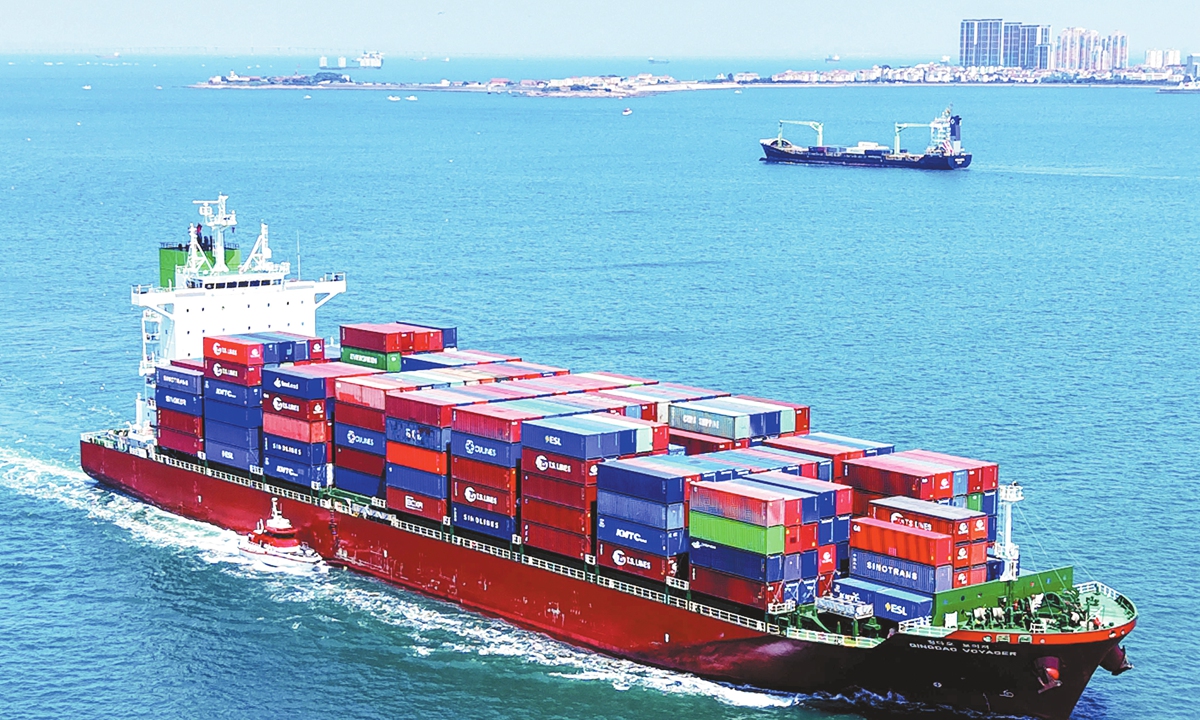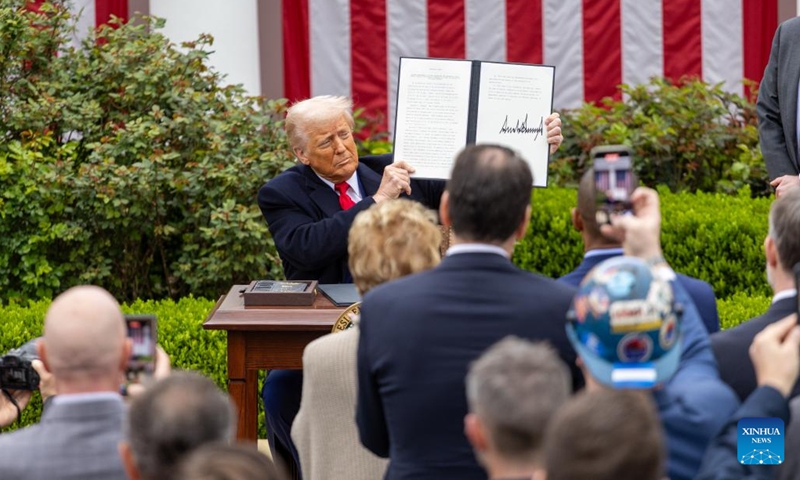US May trade deficit further widens as US tariffs continue to disrupt supply chains, impact economy: analysts

An aerial image shows cargo shipping containers and cranes as cargo containers sit stacked on freight trains at the Port of Long Beach in Long Beach, California on April 10, 2025. Photo: VCG
In May, both US imports and exports contracted, with the trade deficit widening further. Analysts said that the latest data indicated that the US tariff policies continued to disrupt supply chains, while impacting the US economy.
The US recorded a trade deficit of $71.5 billion, up by 18.7 percent year-on-year, according to data released by the US Commerce Department's Bureau of Economic Analysis (BEA) on Thursday.
US May exports were $279.0 billion, $11.6 billion less than April exports. May imports were $350.5 billion, $0.3 billion less than April imports.
This also means an expansion from the $60.3 billion goods and services deficit in April, according to BEA statistics.
Such an increased deficit was logged one month after the US imposed a 10 percent duty on most trading partners in early April.
"The US tariffs, over the past three months, have disrupted the supply chain, global trade order, while posing economic pressure on the US," Zhou Mi, a senior researcher at the Chinese Academy of International Trade and Economic Cooperation, told the Global Times on Friday.
Zhou also warned of the risks of greater challenges to global trade and economic activities if the US government continues to impose higher tariffs after July 9, which will make the world face increased uncertainty.
While the deficit increased, the US recorded declines in both exports and imports in May.
The US exports of goods in May decreased by $11.4 billion to $180.2 billion while the exports of services also decreased by $0.2 billion to $98.8 billion in May.
Notably, US exports of industrial supplies and materials decreased $10.0 billion.
The US imports of goods decreased $0.2 billion to $277.7 billion in May, while the imports of services decreased $0.1 billion to $72.8 billion.
Of which, imports of consumer goods fell by $4 billion, with declines in toys, games, and sporting goods, textile apparel, and household goods imports. Industrial supplies and materials decreased by $0.9 billion, while imports of automotive vehicles, parts, and engines increased by $3.4 billion, according to BEA.
Apart from a direct impact on US trade, the US tariffs also had an impact on its domestic economy.
Economists at Goldman Sachs Research assume that companies will pass on 70 percent of the direct cost of tariffs to consumers through higher prices, according to a Goldman Sachs report published on Thursday.
A report by JPMorganChase published on Wednesday also pointed out that US midsize businesses are disproportionately exposed to tariff hikes because they rely more heavily on imports from countries facing the highest rates, such as China. Among midsize firms, the wholesale and retail trade sectors have the highest direct exposure. Many of these operate on thin margins, so even small cost increases can lead to higher prices for customers or disruptions across local supply chains.
Revisions to analysts' consensus estimates of corporate margins suggest that some companies may not be able to fully offset the impact of tariffs. Analysts also expect the growth in earnings-per-share, a key measurement of companies' profitability, to drop off this quarter, read the Goldman Sachs report.
Meanwhile, there are signs of an economic slowdown in the US. For example, the US retail sales dropped by 0.9 percent from April to May, marking the second consecutive month of decline, according to data of the US Commerce Department's Census Bureau. This was the first consecutive decline since the end of 2023.
"If the tariff freeze disappears and the high tariffs are reimposed, then almost certainly we're going to have a short recession," said Ben Hackett of Hackett Associates, which tracks port traffic for the National Retail Federation, cited by BBC.
In total, the imposed tariffs would reduce market income by 1.1 percent in 2026 and amount to an average tax increase per US household of $1,183 in 2025 and $1,442 in 2026, according to an analysis published by the Tax Foundation, a Washington-based think-tank, in June.
The analysis also pointed out that the imposed US tariffs would reduce US GDP by 0.8 percent over the next decade, before foreign retaliation, according to the Tax Foundation.



